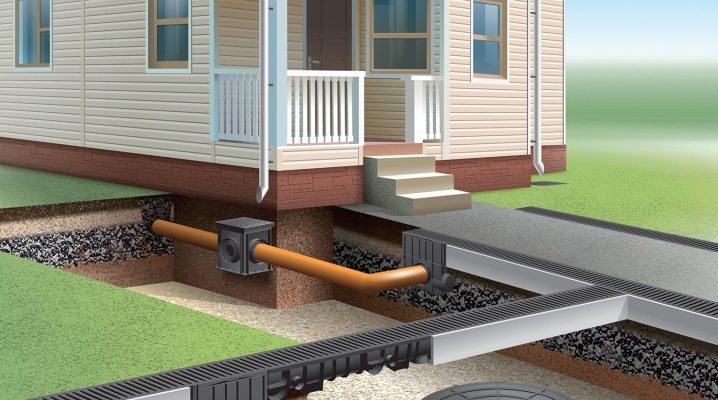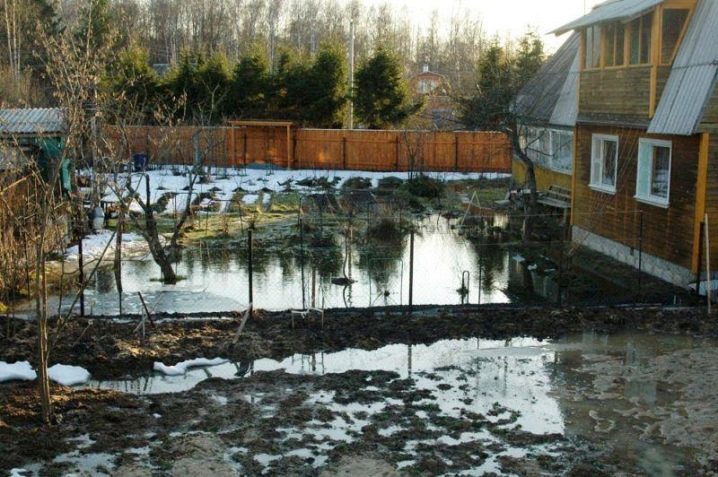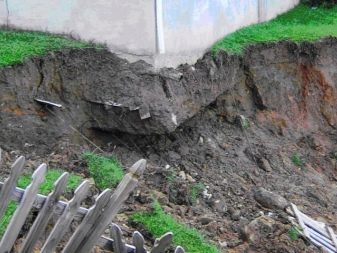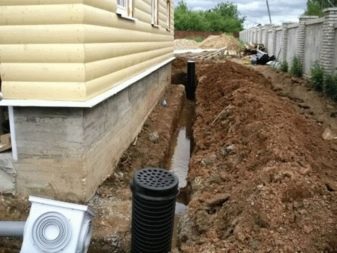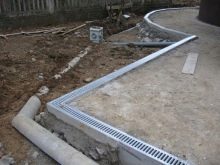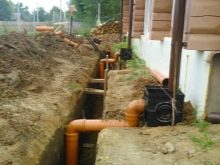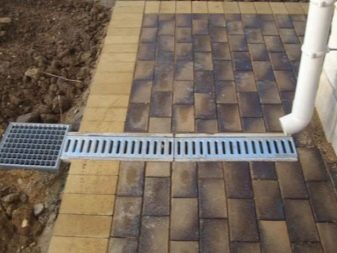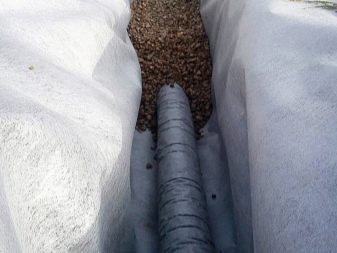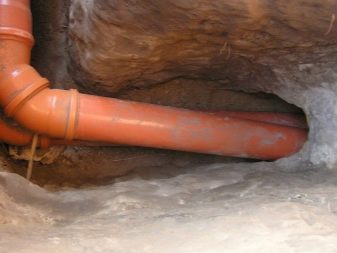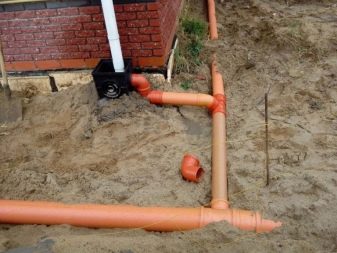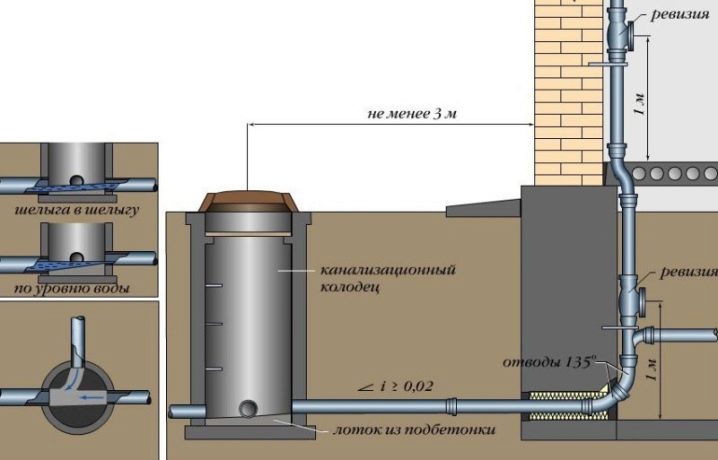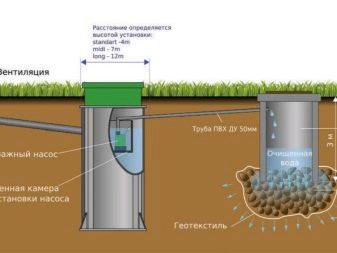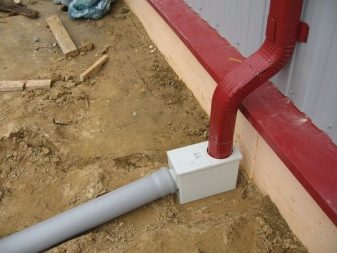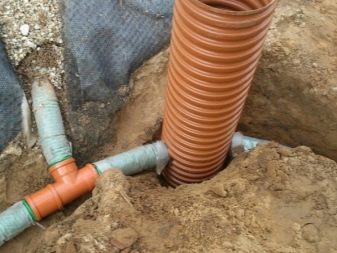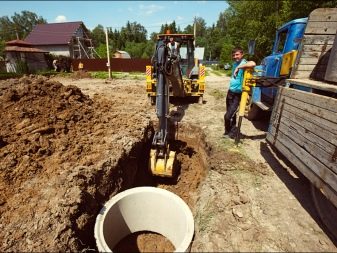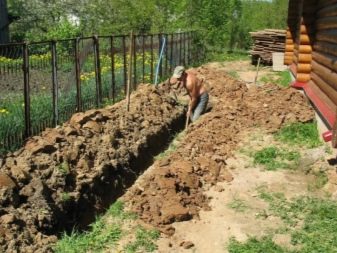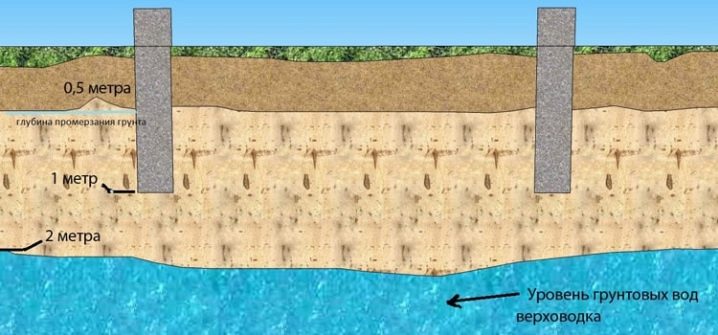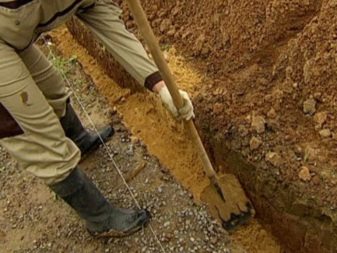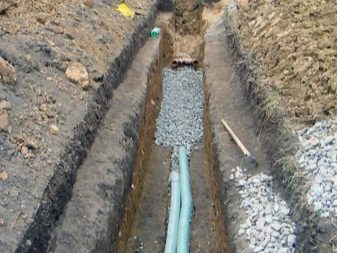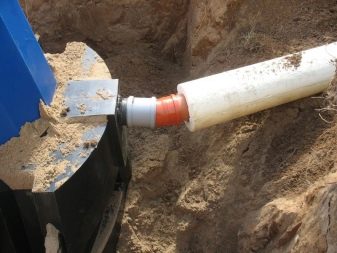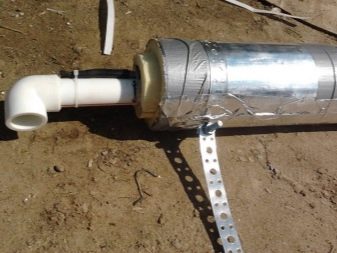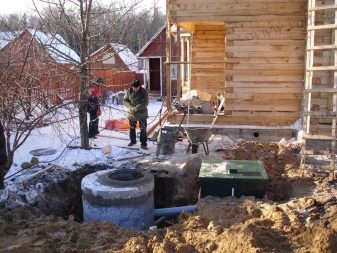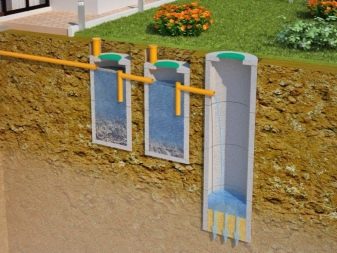Drainage system: device and installation
Drainage sewer system is an important engineering and technical structure, which is often used in the suburban and home gardens. Arrangement of the design for the diversion of water is not particularly difficult and can be done independently.
Purpose
Drainage of sewage plays an important role in the regulation of groundwater and wastewater in the territory of households. With its help, the collection and removal of groundwater is carried out, as well as the regulation of their level during snowmelt and during the rainy season. The need to form a drainage system is due to the proximity of the aquifers and the threat of flooding of cellars and basements. Therefore, if the level of occurrence of groundwater is located at a distance of less than two and a half meters from the surface of the earth, the arrangement of drainage is a mandatory procedure.
No less important reasons for creating drainage are the type and structure of the soil. So, in clay and loamy areas, the arrangement of drainage is mandatory.
This is due to the poor capacity of these types of soil, so that the water after the rain will stand on the site, forming puddles and dirt.
Species
Spatial drainage can be placed horizontally, vertically, or have a combined design.
Horizontal design
It is presented in three types: open, wall and closed.
Open
The most common and simple is the open drainage type. It is a network of trenches and ditches dug under the slope, along which water is diverted from the site to the road or to the sewer. The advantage of an open system is the low cost of its execution, and the disadvantages include a not very aesthetic appearance.
Closed
Closed drainage structure assumes the location of all drainage communications underground and is subdivided into four subspecies.
- The first one has the simplest design solution and consists in digging a ditch along the entire perimeter of the backyard plot and then sleeping sand or rubble into it.A layer of soil is piled on top of the drainage material and lightly tamped down. The advantage of this method is the absence of the need for laying pipes and the cheapness of the event. The disadvantage is short-lived sewage and low productivity.
- The second subspecies of the closed sewage system requires the installation of special trays, which are made both with holes and without holes. Perforated models are designed to collect liquid from adjacent areas, and solid - for its intake from drains with subsequent withdrawal to a special receiver. To prevent rapid blockage, trays are closed with cast iron or plastic gratings.
- The third subspecies of a closed sewage system involves the installation of a drainage pipe made of cast iron, steel or plastic. The most common products are PVC, whose popularity is due to low cost, low weight, ease of transportation and long service life of up to 50 years.
- The fourth way of arranging a closed drainage system is to install special mats that act as filters and consist of two layers of nonwoven material with a drainage layer between them made of rigid polyamide material.Mats are placed on the surface of the earth or installed in pre-dug trenches. The main function of such drainage is to form a separation frost protection layer and prevent mixing of several applied layers of drainage material. The main disadvantage of the use of mats is their comparative high cost and overall complexity of the process.
Wall mounted
And the last, wall type of drainage system of horizontal execution consists in digging a trench around the foundation of the structure with the subsequent filling of several gravel and sand into it. The depth of the trench should be equal to the depth of the foundation, the outer surface of which should be waterproofed. Instead of sand and gravel, it is allowed to install mats covered with PVC on one side. This will eliminate the need for additional waterproofing of walls and reduce installation time. Plastic or corrugated pipes are laid at the bottom of the ditches, through which rain and melt water from the roof of the building will subsequently be diverted to special receptacle wells.
Vertical drainage
It is a network of absorbing and outflow wells, equipped with pumping units with the function of forced pumping of water. This method is used in the construction of roads and other engineering structures, the construction of which requires high-quality drainage of land. The method is most relevant when working with low-permeable soils, including clay and loamy soils. The pipes used for vertical drainage have a combined design, where the lower part of the pipeline is perforated and the upper part is integral.
Structurally, vertical systems are slightly more complicated than horizontal ones. This is because the collected water must be discharged regularly. To do this, use two types of drainage wells - water intake and turning. The former are used to collect groundwater and are located at the bottom of the relief. The latter are installed on the sections of the rotation of pipes located at an angle of 90 degrees and most often made of PVC. The size of such a well can reach 30 cm in diameter and have a height of 1.2 to 3 m.
For raising of water from certain depths and dumping it into reservoirs-receptacles specially designated for this, deep water pumps are used.The devices have an elongated narrow waterproof case that can easily fit in a narrow well, and allows you to operate the device in water without the risk of electric shock. The pump is placed in the lower part of the pipeline, and is connected to the outlet pipes with the help of discharge pipes.
When the well is operating normally, the draining effect extends over a distance of 300-800 m, and the productivity of one well is from 50 to 120 l / s. To prevent blockage and silting of wells, it is necessary to regularly monitor the condition of the system and, if necessary, clean it up.
With a normal level of salinity, pumped out water is allowed to irrigate agricultural plantations.
Combined
Drainage is a combination of vertical and horizontal, and is created under ambiguous relief conditions, complex heterogeneous soils and in other specific conditions under which the formation of only one type is impossible. Such drainage is a spectacular addition to storm sewers and saves a plot or field from excessive moisture and dirt.
Preparatory work
The first stage of the installation of drainage sewage is the drafting of a project with a detailed layout of each element of communications. In the absence of experience in the performance of engineering work and survey research of the soil, the most correct would be to contact specialists. Masters will determine the desired type of drainage system, as well as calculate the depth and angle of inclination of the pipes in accordance with the terrain and the level of groundwater.
In the case of a large elevation difference in the area, it is recommended that the drainage system be perpendicular to the slope. If the entire site is located on a slope, then at least two systems should be installed, connected with each other by means of overflow pipes. In this case, the last of the ditches, located at the bottom of the site, should have a drain into the drainage receiver.
After the design and estimate documentation is ready, you can start excavation work. Digging trenches should begin in the second half of summer after warm and dry weather has been established. Work begins with the formation of a drainage pit, which will serve as a receiving tank for rainwater and melting snow.The depth of the pit is determined independently and depends on the type of soil and the amount of precipitation.
When digging both the trench and trenches, the upper, most fertile soil layer is evenly distributed throughout the site, and the lower layers are exported or used for construction needs. If sandy moving soils are present at the site, the walls of the excavation and trenches should be strengthened with temporary wooden shields, which are removed after laying pipes, trays, drainage mats or falling asleep sand-gravel.
If it is supposed to discharge sewage into the drainage pit, its depth should be above the level of groundwater location during the spring period. Allowable depth is 1-3 m.
The depth of drainage trenches can reach one meter and also depends on the abundance of moisture, the level of groundwater and the carrying capacity of the soil.
Mounting technology
At the end of the excavation work, you can start the construction of drainage. When arranging open-type systems, the bottom of the excavation pit and trenches should be poured with sifted sand, after which several alternating layers of sand and crushed stone should be formed and the trench covered with plastic or cast-iron grating.When choosing a material for the grid, the type of soil and the presence of structures that reinforce the walls of the trench must be taken into account.
On soils prone to shattering or with insufficient strengthening, it is appropriate to use lighter plastic models. During the construction of a closed type system, trays or pipes are laid on top of the sand cushion, the presence of perforations in which depends on the location and functions of this element.
When arranging the sewage system on sandy and eroded soils, it is recommended to use mats or geotextiles located between layers of rubble. This will prevent the erosion of the sand cushion and increase the life of the drainage channel. In the case of work in dense soils, it is not necessary to strengthen the walls of the trenches.
If the drainage system is planned to be operated in winter, the pipes should be laid below the limit of soil freezing. This will avoid their rupture, as well as extend the life of underground utilities. In conditions of a sharply continental climate, it is recommended to wrap pipes with insulating material or put a heating cable in a trench.
The formation of a correct inclination is achieved by pouring rubble under the required pipe sections with the subsequent checking of the angle with the help of a building level. When arranging the drainage system at the dacha, unwanted steel drums can be used as a receptacle tank. To do this, they removed the bottom and bottom end. After giving the barrel the desired configuration, it is placed in the pit, after filling it with rubble. Instead of a barrel or concrete rings, you can use old tires that fit in the shape of a well and securely fasten to each other.
During the construction of a closed system, it should be remembered that the cross section of pipes in the areas of their adherence to a pit or well should be larger than the size of the section at opposite ends. This will help prevent clogging of the system and will prevent water stagnation.
Drainage sewage allows you to quickly, efficiently and with minimal cost to remove excess water from the site and make it comfortable and comfortable.
On the installation of the drainage system, see the following video.
